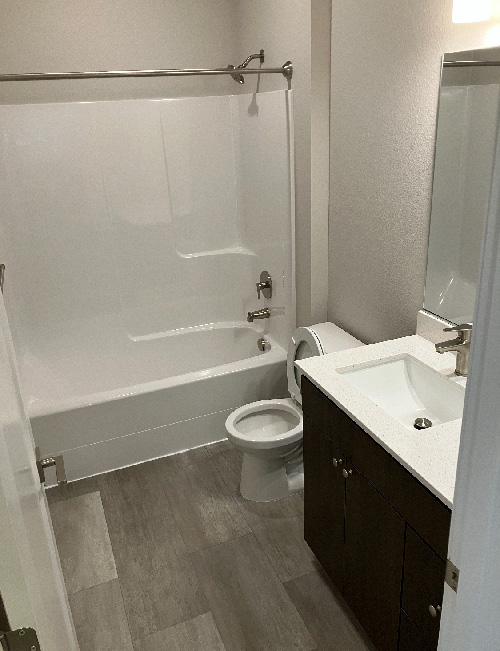Introduction
In an era where sustainability is at the forefront of many industries, professional cleaning services are not left out. Companies are now focusing on eco-friendly methods that not only benefit the planet but also reduce operational costs. The phrase “Sustainable Practices That Cut Costs in Professional Cleanings” encapsulates a growing trend that merges environmental responsibility with financial prudence. This article dives deep into various strategies that professional cleaning services can adopt to remain competitive while simultaneously embracing sustainable practices.
Sustainable Practices That Cut Costs in Professional Cleanings

When we talk about sustainable practices in the realm of cleaning, it’s about more than just using green products. It’s a holistic approach that considers resource management, waste reduction, and energy efficiency. By implementing such practices, commercial cleaning services can achieve substantial savings while delivering top-notch service.
The Importance of Sustainability in Cleaning Services
Why should cleaning companies care about sustainability? Well, for starters, customers today are more informed and conscientious than ever before. A commitment to sustainable practices can enhance a company’s reputation and attract eco-conscious clients. Additionally, the long-term savings associated with less resource consumption make it a win-win situation for both businesses and the environment.
Understanding Eco-Friendly Cleaning Products
One major component of sustainable cleaning is the use of eco-friendly products. These cleaners typically contain biodegradable ingredients that minimize environmental impact. But do they really cut costs?
Benefits of Eco-Friendly Products
- Lower Toxicity: Safer for both employees and clients. Reduced Chemical Costs: Many eco-friendly products can be made from inexpensive household items like vinegar or baking soda. Regulatory Compliance: Staying ahead of regulations can save money on fines.
Energy-Efficient Equipment: A Smart Investment
Investing in energy-efficient cleaning equipment may seem costly upfront; however, it pays off over time through reduced energy bills.

Types of Energy-Efficient Equipment
- High-Efficiency Vacuums: These machines use less electricity and filter air better. Microfiber Mops: They require less water and fewer chemicals while providing superior cleaning.
Water Conservation Techniques
Did you know that using less water during cleanings doesn’t just save resources but also cuts costs?
Methods to Conserve Water
Use Misting Systems: Instead of soaking surfaces, misting reduces water usage significantly. Monitor Water Usage: Keeping track of water consumption can identify areas for improvement.Training Staff on Sustainable Practices
It’s one thing to have eco-friendly policies in place; it’s another to ensure your staff is well-informed.
Benefits of Staff Training
- Increases efficiency by ensuring everyone understands best practices. Reduces accidents related to improper product use.
Recycling and Waste Management Strategies
Cleaning often generates waste. How can companies manage this effectively?
Best Practices for Recycling
- Separate materials at the source (paper, plastics, etc.). Partner with local recycling programs to ensure proper disposal.
Sustainable Supply Chain Management
Choosing suppliers who prioritize sustainability can create a ripple effect throughout your operation.
Considerations When Choosing Suppliers
- Look for products made from recycled materials. Assess suppliers’ transportation methods to reduce carbon footprints.
Green Certifications: Worth It?
Many businesses wonder if obtaining green certifications is worth their time and money.
Advantages of Green Certifications
Enhances credibility and marketability. Often leads to partnerships with other eco-conscious organizations.Client Education on Sustainable Cleaning Benefits
Educating clients on the benefits of sustainable cleaning can foster loyalty and repeat business.
Key Points to Communicate:
- Cost savings through reduced chemical usage. Health benefits related to improved indoor air quality.
Utilizing Technology for Efficiency Gains
Tech advancements offer new ways to streamline operations while being environmentally friendly.
Examples of Useful Technology:
- Scheduling software that optimizes routes for cleaning crews. Inventory management systems that monitor supply levels efficiently.
FAQs About Sustainable Practices in Professional Cleanings
1. What are some common eco-friendly cleaning products?
Eco-friendly options include vinegar, baking soda, lemon juice, essential oils, and biodegradable commercial cleaners designed with sustainability in mind.

2. Do sustainable practices really cut costs?
Absolutely! While some may have higher initial investments (like energy-efficient equipment), they lead to substantial savings over time through lower utility bills and reduced product usage.
3. How can I train my staff on sustainable practices?
Hands-on workshops combined office cleaning service with online training modules work best! Regular updates on new methods or products also keep everyone informed and engaged.
4. Is recycling necessary for commercial cleaning services?
Yes! Effective recycling minimizes waste sent to landfills while potentially reducing disposal costs—a win-win for both the environment and your budget!
5. Can technology really improve sustainability?
Definitely! Tools like route optimization software reduce travel times for crews, thereby lowering fuel consumption—plus there are many apps aimed at tracking supplies efficiently!
6. What certifications should I consider for my cleaning service?
Look into certifications like Green Seal or LEED (Leadership in Energy and Environmental Design). These credentials showcase your commitment to sustainability!
Conclusion
In conclusion, adopting sustainable practices in professional cleanings is no longer just a nice-to-have; it's essential—not just for environmental stewardship but also for cost-effectiveness within commercial operations like office cleaning services. Whether through eco-friendly products or energy-efficient equipment choices, these strategies collectively contribute towards creating cleaner spaces while cutting expenses substantially over time.
As we've explored throughout this article titled “Sustainable Practices That Cut Costs in Professional Cleanings,” integrating these approaches fosters not only profitability but also enhances client relationships by aligning with their values—after all; who wouldn’t want their workspace cleaned sustainably?
So roll up those sleeves; it's high time we scrubbed away unsustainable habits—let's get clean without costing the earth or our wallets!